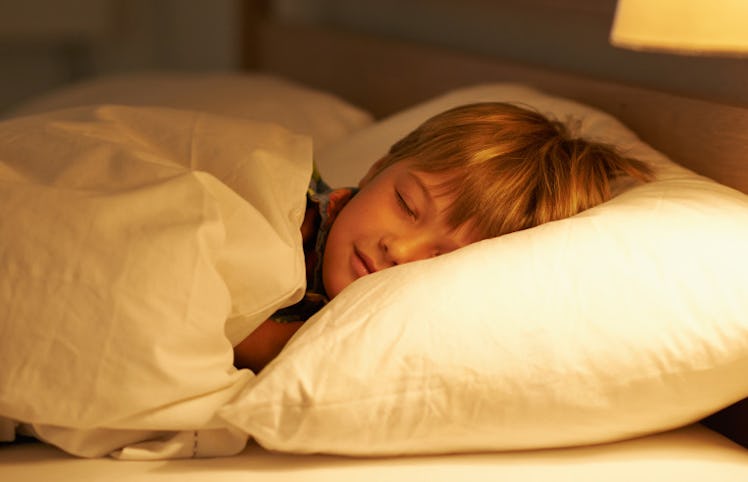How To Get a Kid on a School Night Sleep Schedule
Getting a kid to sleep when it’s still light outside requires adjusting schedules slowly.

As summer winds down, parents attempt with varying degrees of success, to get kids back on a regimented sleep schedule. This is critical because kids between 6 and 13 need 9 to 11 hours to operate at full capacity and retain information, which is pretty helpful when you’re in school. Because most schools still start early – even though they probably shouldn’t – the transition to a school-year sleep schedule can be rough (cut to million of parents dragging millions of barely lucid, grumpy kids out the door). Fortunately, it’s a largely solvable problem for parents who take a strategic approach to setting the alarm.
“This is a good time of year for parents to review with their children bedtime routines and the importance of sleep,” says Dr. Liz Super, a pediatric sleep medicine specialist at the Oregon Health & Science University’s Doernbecher Children’s Hospital. “There’s a lot of research showing that sleep is so important in school-age kids: It can help them improve functioning, cognitive improvement, it can help with their behavior and mood.”
Parents should consider getting children into a steady, school-focused bedtime routine similar to preparing for jet lag: Move the bedtime back in short increments over time to normalize the idea of going to bed before the sun sets. This conditions the mind and body into associating the routine with growing increasingly sleepy pre-darkness.
“Ideally, if you can, two weeks before school starts, start moving the bedtime back to an appropriate time for your child,” says Super. “If you can do 15 or 20 minutes earlier every night or two, that will be the best way to move bedtime back. You’re moving awake time earlier as well.”
So what should that routine entail? First, parents should dim the lights, about an hour before bedtime, which helps release the brain’s natural melatonin and triggers the brain’s circadian rhythms. After that, all screens should go dark: TV, phone (everyone’s), and computer screens have been proven to disrupt sleep activity when used in the lead-up to bedtime. After that, allow 30 minutes for relaxing activities such as baths, books, or just one-on-one time with the kid.
“It can be really, really simple. What you want to avoid is a routine that’s dragged out and has multiple steps where kids are going in and out of the bedroom,” says Super. “It should be a nice time to connect with the child, review the day, something that they look forward to. It takes time to get into these habits, but with routine it helps decrease anxiety. They know what’s going to happen in bedtime, and it helps them ease into sleep.”
The Four-Pronged Approach to School Night Sleep Schedules
- Move bedtime back in short increments over the two weeks before school starts to normalize the idea of going to bed before the sun sets.
- Dim the lights about an hour before bedtime, which helps release the brain’s natural melatonin and triggers the brain’s circadian rhythms.
- Turn off all screens. Televisions, phones, and computers should go dark.
- Allow 30 minutes for relaxing activities such as baths, books, or just one-on-one time.
Is it always going to work? Of course not. Any parent can attest to the fact that the simple act of getting a child to sleep can be awful. But parents who are consistent can condition a response to bedtime.
“We can’t force ourselves to sleep.” says Super. “It’s a complex process, and the best thing you can do for kids is provide structure. Especially with school-aged kids.”
This article was originally published on